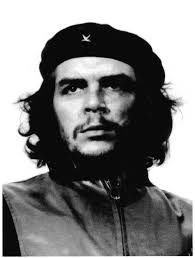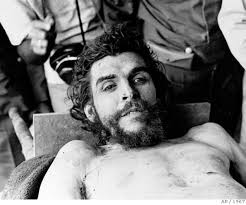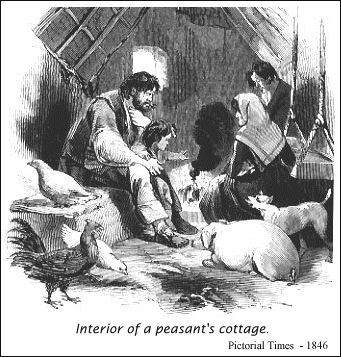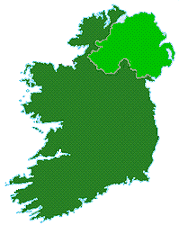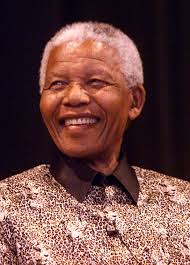
Mesopotamia is a region, not a country.
Refer to the individual Peoples that made up Mesopotamia; the Sumerians, Akkadians, Babylonians, Assyrians, Chaldeans, and to some degree the Hittites, Phoenicians and Persians
In the narrow sense, Mesopotamia is the area between the Euphrates and Tigris rivers, north or northwest of the bottleneck at Baghdad, in modern Iraq; it is Al-Jazirah ("The Island") of the Arabs. South of this lies Babylonia, named after the city of Babylon. However, in the broader sense, the name Mesopotamia has come to be used for the area bounded on the northeast by the Zagros Mountains and on the southwest by the edge of the Arabian Plateau and stretching from the Persian Gulf in the southeast to the spurs of the Anti-Taurus Mountains in the northwest. Only from the latitude of Baghdad do the Euphrates and Tigris truly become twin rivers, the rafidan of the Arabs, which have constantly changed their courses over the millennia. The low-lying plain of the Karun River in Persia has always been closely related to Mesopotamia, but it is not considered part of Mesopotamia as it forms its own river system. Mesopotamia, south of Ar-Ramadi (about 70 miles, or 110 kilometers, west of Baghdad) on the Euphrates and the bend of the Tigris below Samarra' (about 70 miles north-northwest of Baghdad), is flat alluvial land. Between Baghdad and the mouth of the Shatt al-'Arab (the confluence of the Tigris and Euphrates, where it empties into the Persian Gulf) there is a difference in height of only about 100 feet (30 meters). As a result of the slow flow of the water, there are heavy deposits of silt, and the riverbeds are raised. Consequently, the rivers often overflow their banks (and may even change their course) when they are not protected by high dikes. In recent times they have been regulated above Baghdad by the use of escape channels with overflow reservoirs. The extreme south is a region of extensive marshes and reed swamps, hawrs, which, probably since early times, have served as an area of refuge for oppressed and displaced peoples. The supply of water is not regular; as a result of the high average temperatures and a very low annual rainfall, the ground of the plain of latitude 35 N is hard and dry and unsuitable for plant cultivation for at least eight months in the year. Consequently, agriculture without risk of crop failure, which seems to have begun in the higher rainfall zones and in the hilly borders of Mesopotamia in the 10th millennium BC, began in Mesopotamia itself, the real heart of the civilization, only after artificial irrigation had been invented, bringing water to large stretches of territory through a widely branching network of canals. Since the ground is extremely fertile and, with irrigation and the necessary drainage, will produce in abundance, southern Mesopotamia became a land of plenty that could support a considerable population. The cultural superiority of north Mesopotamia, which may have lasted until about 4000 BC, was finally overtaken by the south when the people there had responded to the challenge of their situation. The present climatic conditions are fairly similar to those of 8,000 years ago. An English survey of ruined settlements in the area 30 miles around ancient Hatra (180 miles northwest of Baghdad) has shown that the southern limits of the zone in which agriculture is possible without artificial irrigation has remained unchanged since the first settlement of Al-Jazirah. The availability of raw materials is a historical factor of great importance, as is the dependence on those materials that had to be imported. In Mesopotamia, agricultural products and those from stock breeding, fisheries, date palm cultivation, and reed industries--in short, grain, vegetables, meat, leather, wool, horn, fish, dates, and reed and plant-fiber products--were available in plenty and could easily be produced in excess of home requirements to be exported. There are bitumen springs at Hit (90 miles northwest of Baghdad) on the Euphrates (the Is of Herodotus). On the other hand, wood, stone, and metal were rare or even entirely absent. The date palm--virtually the national tree of Iraq--yields a wood suitable only for rough beams and not for finer work. Stone is mostly lacking in southern Mesopotamia, although limestone is quarried in the desert about 35 miles to the west and "Mosul marble" is found not far from the Tigris in its middle reaches. Metal can only be obtained in the mountains, and the same is true of precious and semiprecious stones. Consequently, southern Mesopotamia in particular was destined to be a land of trade from the start. Only rarely could "empires" extending over a wider area guarantee themselves imports by plundering or by subjecting neighboring regions. The raw material that epitomizes Mesopotamian civilization is clay: in the almost exclusively mud-brick architecture and in the number and variety of clay figurines and pottery artifacts, Mesopotamia bears the stamp of clay as does no other civilization, and nowhere in the world but in Mesopotamia and the regions over which its influence was diffused was clay used as the vehicle for writing. Such phrases as cuneiform civilization, cuneiform literature, and cuneiform law can apply only where people had had the idea of using soft clay not only for bricks and jars and for the jar stoppers on which a seal could be impressed as a mark of ownership but also as the vehicle for impressed signs to which established meanings were assigned--an intellectual achievement that amounted to nothing less than the invention of writing.
Questions as to what ancient Mesopotamian civilization did and did not accomplish, how it influenced its neighbors and successors, and what its legacy has transmitted are posed from the standpoint of 20th-century civilization and are in part colored by ethical overtones, so that the answers can only be relative. Modern scholars assume the ability to assess the sum total of an "ancient Mesopotamian civilization"; but, since the publication of an article by the Assyriologist Benno Landsberger on "Die Eigenbegrifflichkeit der babylonischen Welt" (1926; "The Distinctive Conceptuality of the Babylonian World"), it has become almost a commonplace to call attention to the necessity of viewing ancient Mesopotamia and its civilization as an independent entity. Ancient Mesopotamia had many languages and cultures; its history is broken up into many periods and eras; it had no real geographic unity, and above all no permanent capital city, so that by its very variety it stands out from other civilizations with greater uniformity, particularly that of Egypt. The script and the pantheon constitute the unifying factors, but in these also Mesopotamia shows its predilection for multiplicity and variety. Written documents were turned out in quantities, and there are often many copies of a single text. The pantheon consisted of more than 1,000 deities, even though many divine names may apply to different manifestations of a single god. During 3,000 years of Mesopotamian civilization, each century gave birth to the next. Thus classical Sumerian civilization influenced that of the Akkadians, and the Ur III empire, which itself represented a Sumero-Akkadian synthesis, exercised its influence on the first quarter of the 2nd millennium BC. With the Hittites, large areas of Anatolia were infused with the culture of Mesopotamia from 1700 BC onward. Contacts, via Mari, with Ebla in Syria, some 30 miles south of Aleppo, go back to the 24th century BC, so that links between Syrian and Palestinian scribal schools and Babylonian civilization during the Amarna period (14th century BC) may have had much older predecessors. At any rate, the similarity of certain themes in cuneiform literature and the Old Testament, such as the story of the Flood or the motif of the righteous sufferer, is due to such early contacts and not to direct borrowing.
Mesopotamia and Education
As a civilization contemporary with Egyptian civilization, Mesopotamia developed education quite similar to that of its counterpart with respect to its purpose and training. Formal education was practical and aimed to train scribes and priests. It was extended from basic reading, writing, and religion to higher learning in law, medicine, and astrology. Generally, youth of the upper classes were prepared to become scribes, who ranged from copyists to librarians and teachers. The schools for priests were said to be as numerous as temples. This indicates not only the thoroughness but also the supremacy of priestly education. Very little is known about higher education, but the advancement of the priestly work sheds light upon the extensive nature of intellectual pursuit.
As in the case of Egypt, the priests in Mesopotamia dominated the intellectual and educational domain as well as the applied. The center of intellectual activity and training was the library, which was usually housed in a temple under the supervision of influential priests. Methods of teaching and learning were memorization, oral repetition, copying of models, and individual instruction. It is believed that the exact copying of scripts was the hardest and most strenuous and served as the test of excellence in learning. The period of education was long and rigorous, and discipline was harsh.
Read more...
 During the early times lands and countries were not yet discovered, there was one explorer who was able to achieve the almost impossible task. He was known to be the first person to cross the big world and the ocean called Pacific. In doing this, he was able to discover new countries and trade with the locals there. This person is none other than Ferdinand Magellan.
During the early times lands and countries were not yet discovered, there was one explorer who was able to achieve the almost impossible task. He was known to be the first person to cross the big world and the ocean called Pacific. In doing this, he was able to discover new countries and trade with the locals there. This person is none other than Ferdinand Magellan.
 I was never really familiar with the city of Bratislava until I watched the movie, EuroTrip. After seeing the movie, I got interested in learning more about this fairly unknown place in Europe. I found out that Bratislava has one of the riches and most colorful
I was never really familiar with the city of Bratislava until I watched the movie, EuroTrip. After seeing the movie, I got interested in learning more about this fairly unknown place in Europe. I found out that Bratislava has one of the riches and most colorful  Norway is a country situated on the northwest part of Europe, surrounded by
Norway is a country situated on the northwest part of Europe, surrounded by  He was nicknamed the Little Corporal but his greatness was not determined by his height but by his military and administrative genius.
He was nicknamed the Little Corporal but his greatness was not determined by his height but by his military and administrative genius.  There was once a significant point in time in world history when
There was once a significant point in time in world history when  Some argue that if the United Nations had intervened far earlier, this mass murder wouldn't have happened. There were cries of possible amassing of weapons and Hutu militant preparations, but the UN had dismissed this. In fact, the US, then governed by
Some argue that if the United Nations had intervened far earlier, this mass murder wouldn't have happened. There were cries of possible amassing of weapons and Hutu militant preparations, but the UN had dismissed this. In fact, the US, then governed by 



